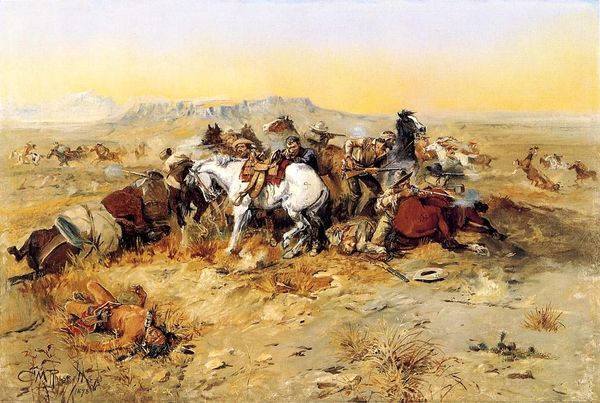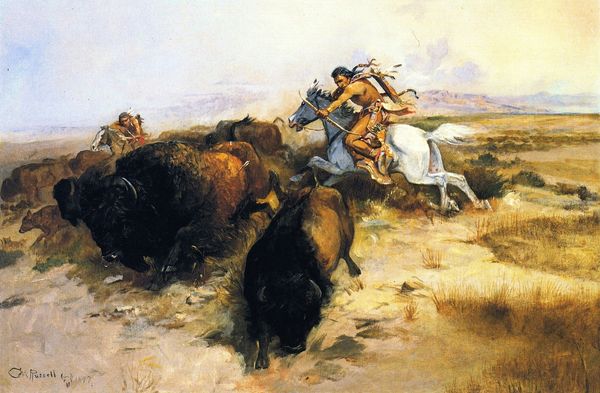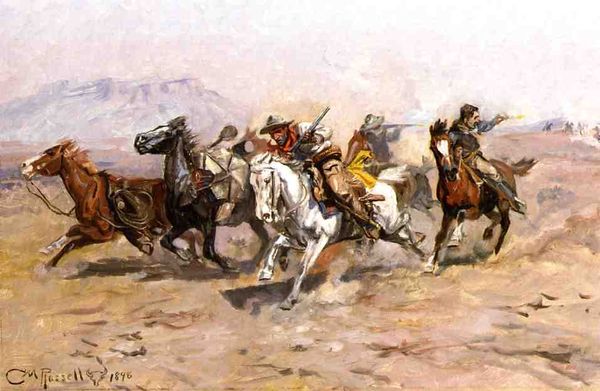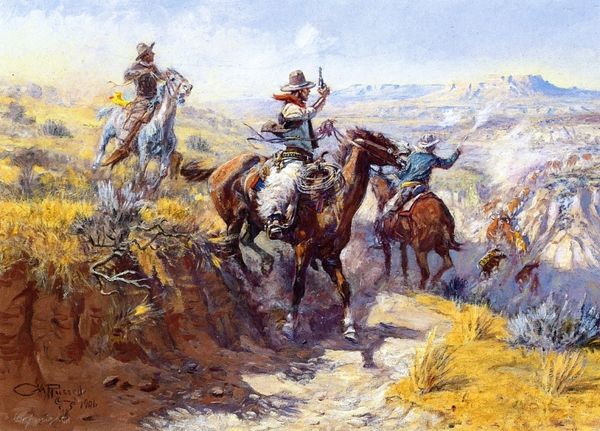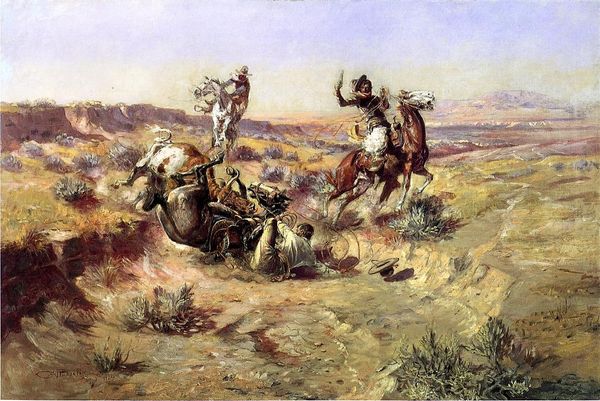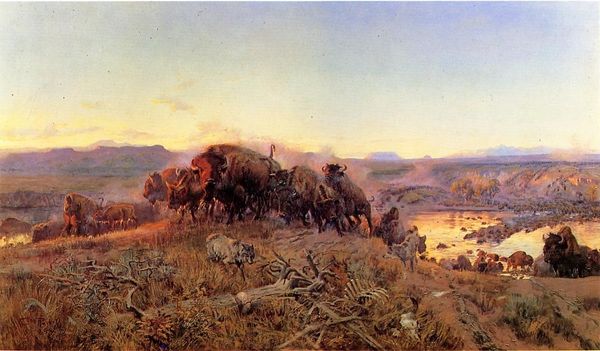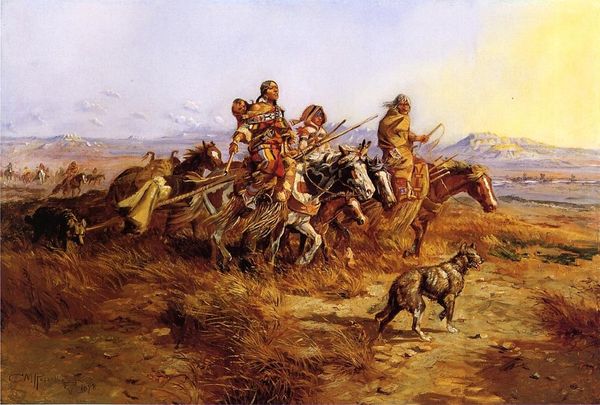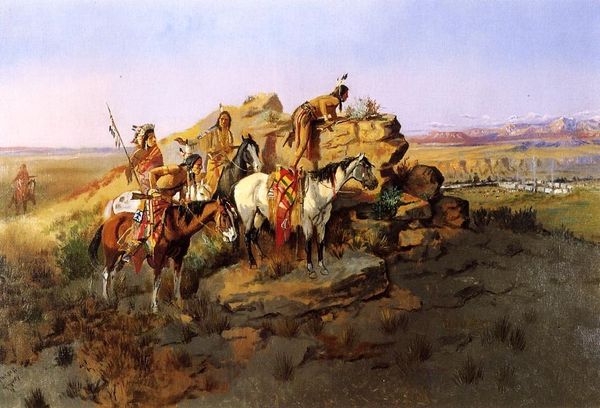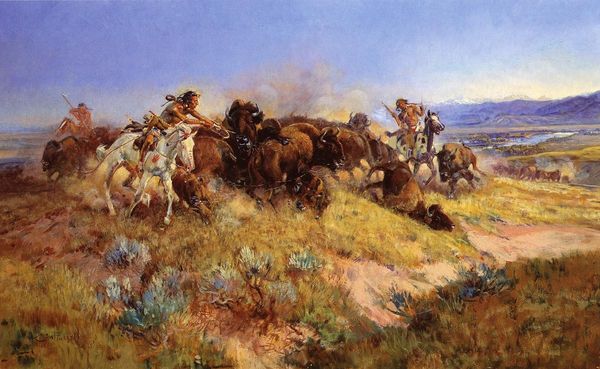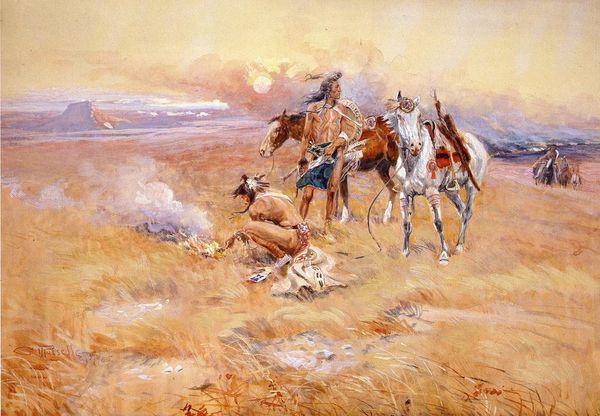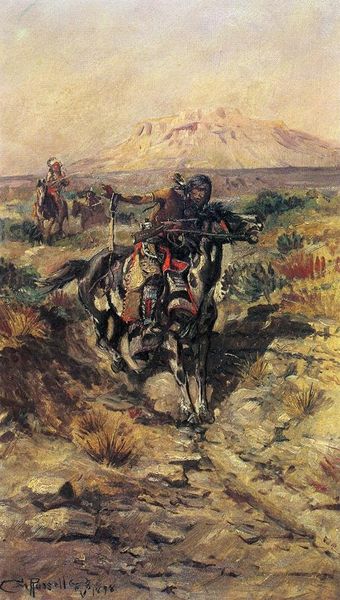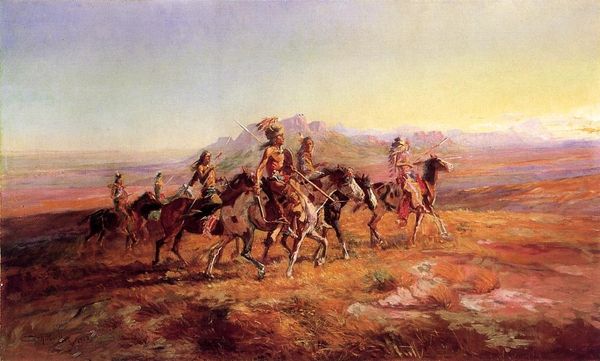
painting, oil-paint
#
narrative-art
#
painting
#
oil-paint
#
landscape
#
impressionist landscape
#
figuration
#
oil painting
Copyright: Public domain
Curator: Charles M. Russell's 1899 oil painting, “Buffalo Hunt,” captures a pivotal moment in the history of the American West, specifically how white expansion influenced Indigenous people. Editor: The texture of the paint, with its thick brushstrokes, especially in the dust and the fur of the bison, really brings the scene alive. I can almost feel the heat and the energy of the chase. Curator: Absolutely, the visual immediacy invites considerations beyond the formal elements; we must acknowledge the ramifications of the romanticized, colonial-settler narratives—its inherent violence, its racist policies, and environmental effects—and what these narratives ultimately erased. Editor: Note how Russell uses a limited palette to evoke the vastness and the harshness of the landscape. The composition leads our eye from the Native hunters in the foreground, pursuing the bison, toward the hazy mountain range in the background. Curator: Right, Russell presents Indigenous peoples engaged in traditional practices, even though these practices were being systematically undermined and nearly eradicated. It's a snapshot frozen in time—at this point the genocide and destruction of the bison populations were close to their conclusion. What tensions exist here, knowing how Indigenous people’s lives were actively affected? Editor: From a compositional perspective, look at how the diagonal lines of the charging horses and bison create a dynamic sense of movement, further contrasted by the static mountain that serves as the backdrop, offering both literal and metaphoric dimensions to consider. Curator: Precisely, this tension encapsulates the dispossession, dislocation, and environmental collapse suffered by Indigenous populations. We should examine what narratives were constructed and continue to be perpetuated in the canon of Western art history, as they speak to critical questions regarding power dynamics. Editor: Agreed. Thinking purely about its formal qualities—the light, the form, and the perspective of "Buffalo Hunt" create something that goes beyond its ostensible historical themes, to also make us feel the movement as much as understand it. Curator: Indeed. Understanding Russell’s work necessitates that we reflect critically, dismantling the oversimplified depictions of Indigenous peoples. Editor: Analyzing the structural components shows me, above all, a painter working at the height of his craft.
Comments
No comments
Be the first to comment and join the conversation on the ultimate creative platform.
